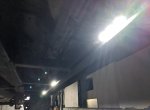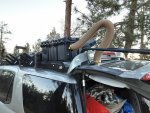toyotech
Expedition Leader
Shoulda made the rack 2" wider per side.
Could have but I don’t want any awnings to overhang the body so much and have sun light make it between awning and body.
Sent from my iPhone using Tapatalk
Shoulda made the rack 2" wider per side.
Could have but I don’t want any awnings to overhang the body so much and have sun light make it between awning and body.
Sent from my iPhone using Tapatalk

Nice. You still have those magnetic lights for close-in work anyways, right?
I think I'm going to leave the alley lights alone. They were perfect when scouting locations off the beaten path at night, which was something I hadn't considered.
I toyed with it while at camp and, like you said, the body got in the way and it really hadn't bought me much.
That said, the alley lights really finished out the last thing "I wish I had" and I hadn't even realized that I needed it, lol.
View attachment 618934












wow for 12 buck you cant beat that!!!!!!!!!!!!! they appear to be bright.....depends if your camera compensated or not.
What gauge is the wiring? I tried a couple different cheaper led spot/rock lights and always ran into issue with the tiny wires. They weren't prewired though so splicing a reasonable gauge wire to angle hair gauge wire was a mess. I gave up and threw the KC Cyclones under my truck.
Sean
Question have you come across any interesting rear locking drawer systems? My dad has my old Sequoia now. If I can sort out a sliding fork mount for a bike with a locking drawer for golf clubs he would be super thrilled. He will likely be adding a intech Sol Horizon or similar trailer and doing 4-8 months on the road. I keep telling him the Sequoia would be great especially given he’s solo and would be pretty light.




